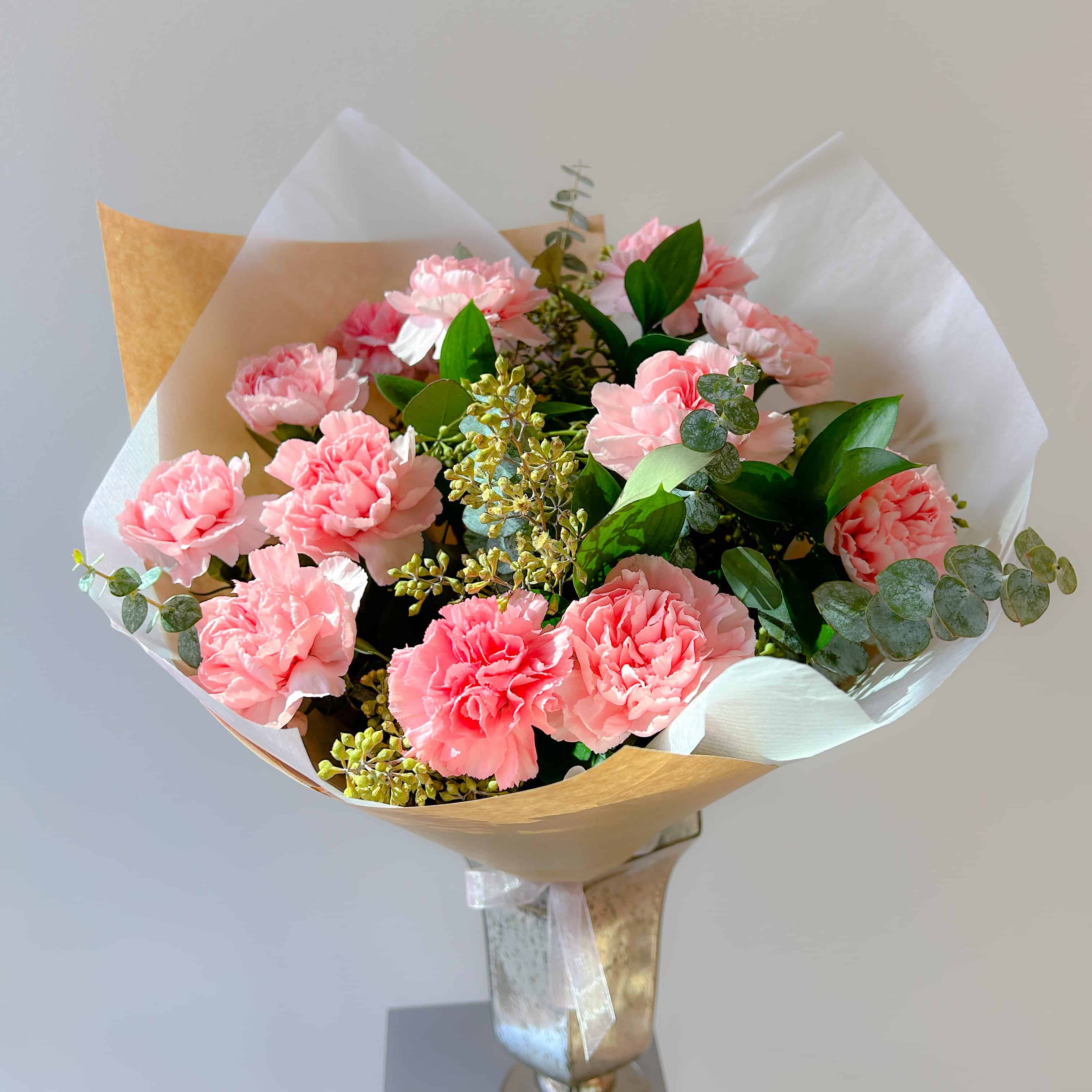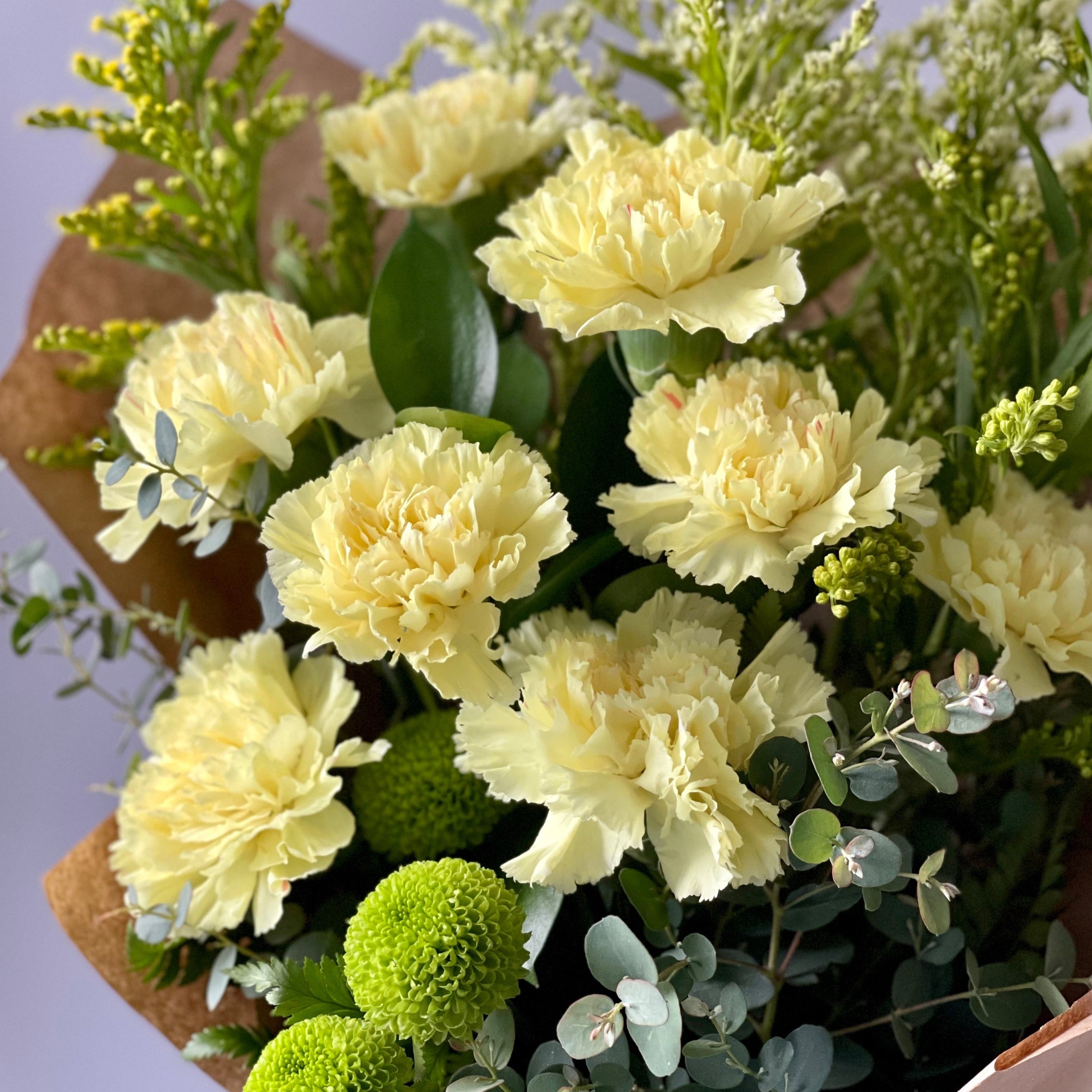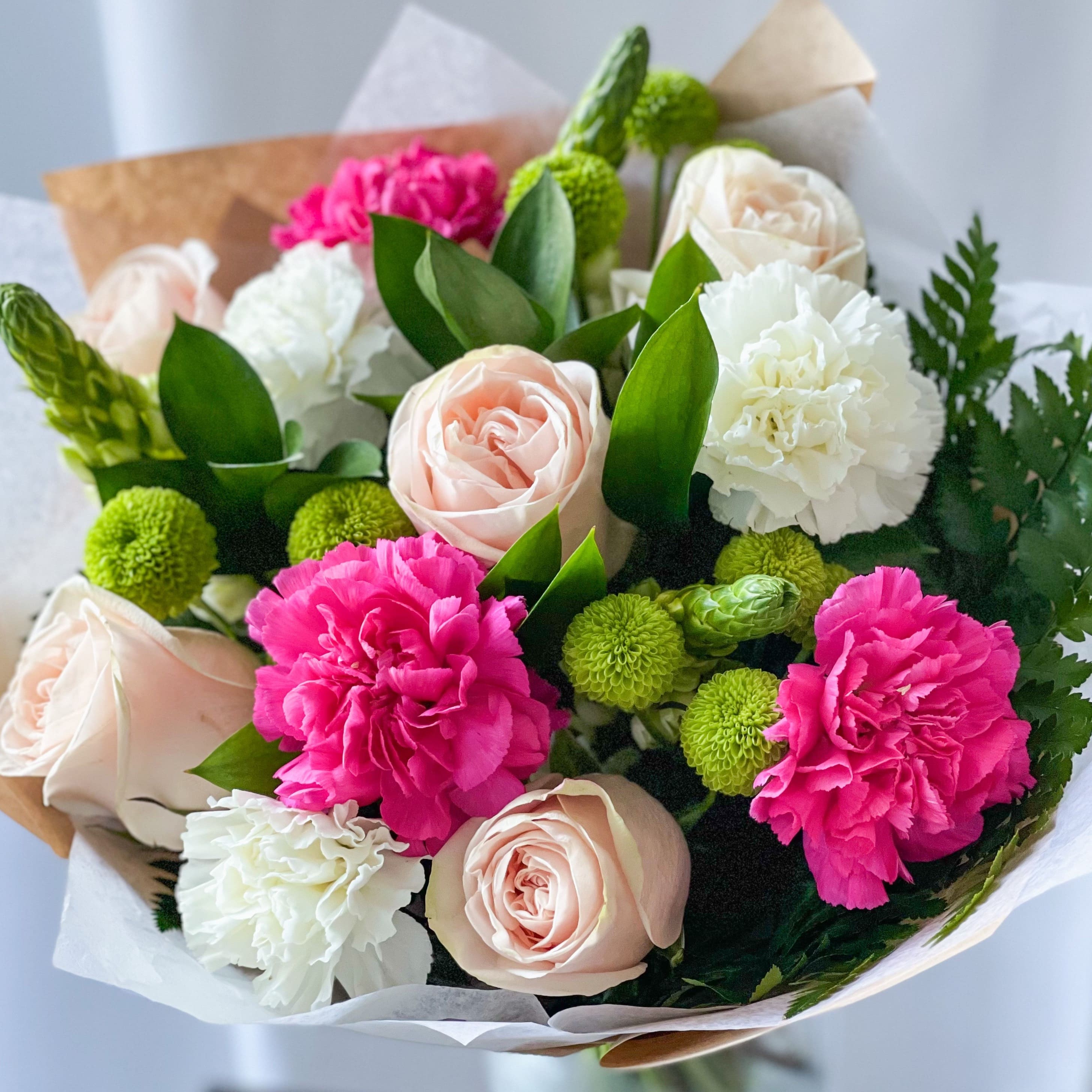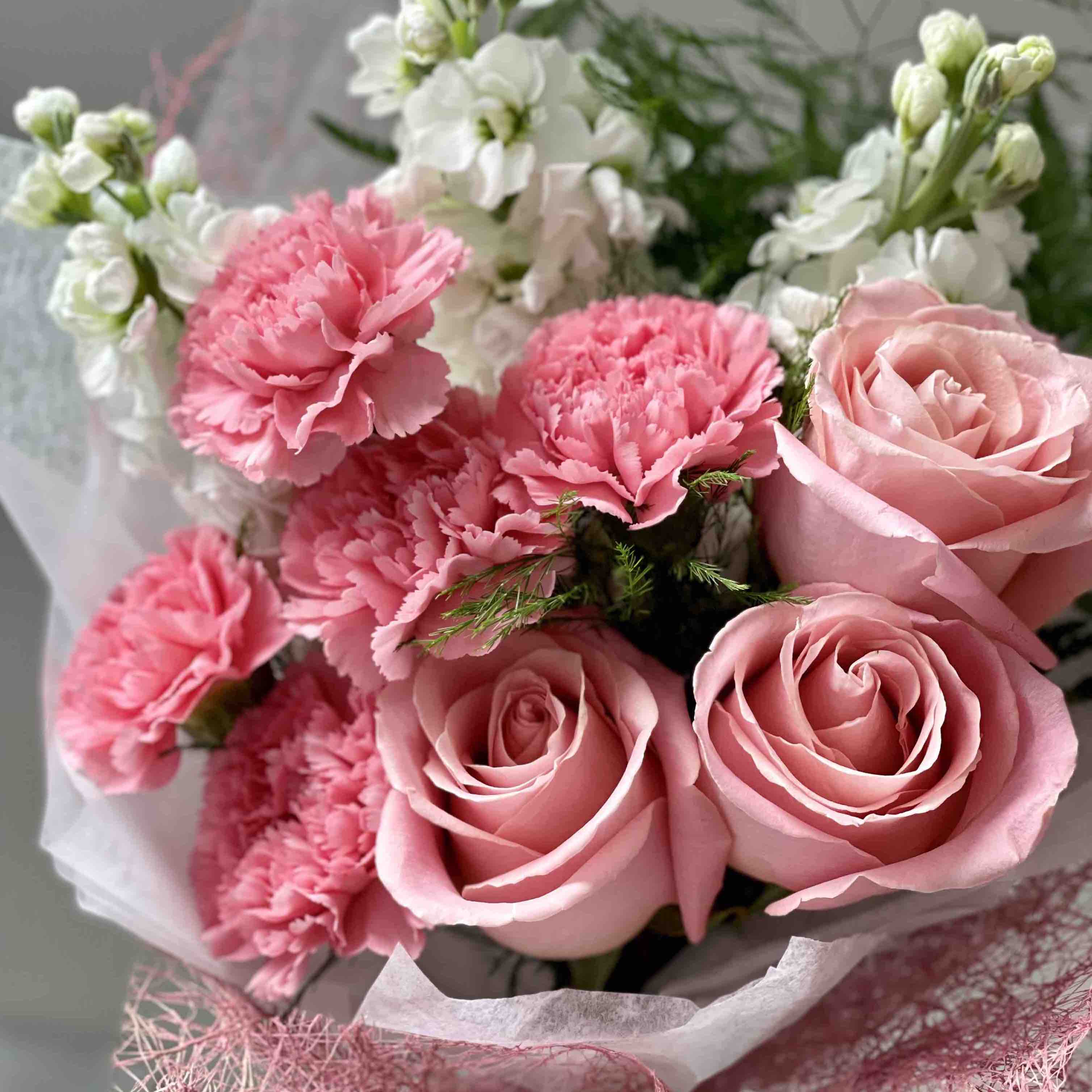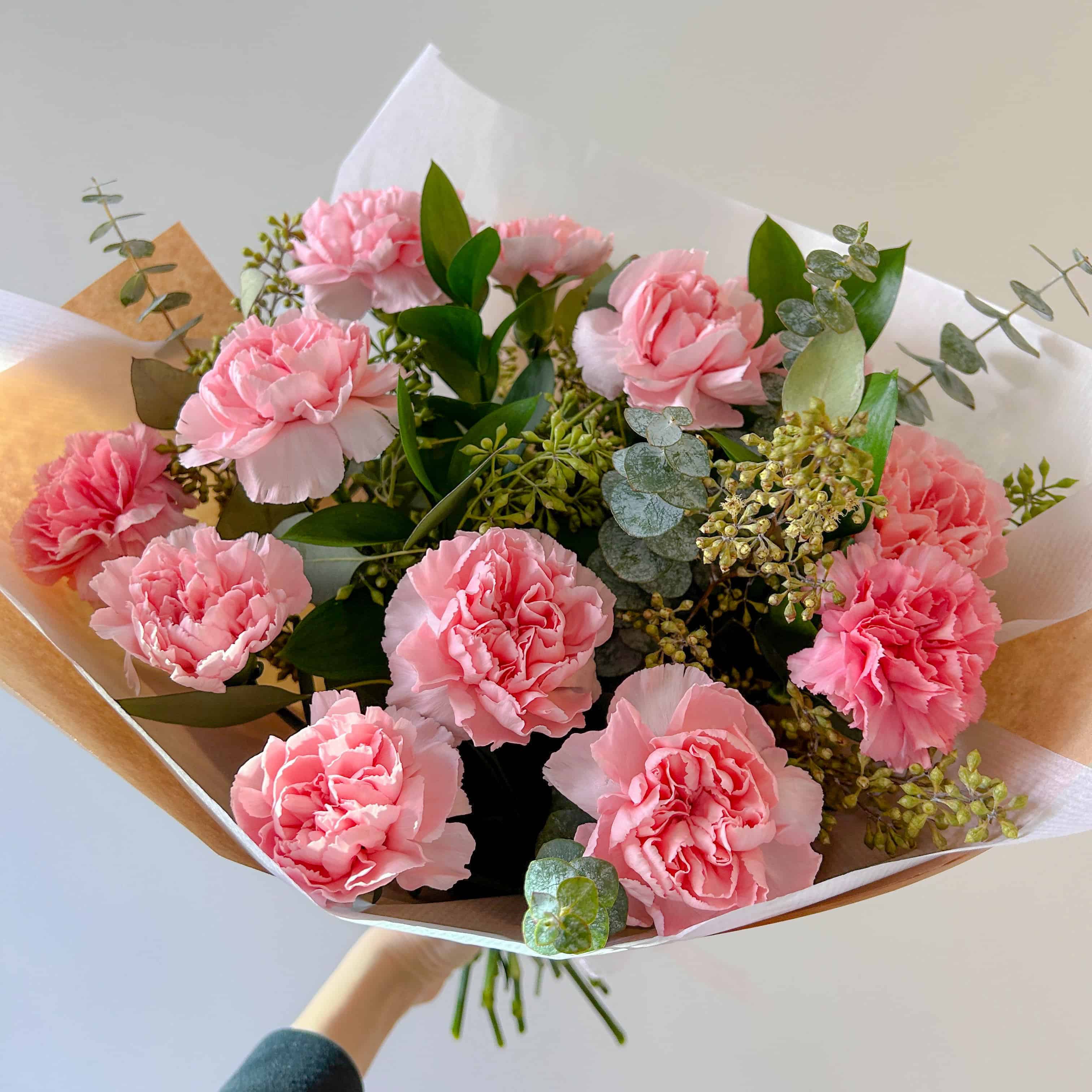Discover the natural charm of this collection. Each bloom in this range is not just a feast for the eyes but also a symbol rich in meaning. Having many colors including deep red, cheerful pinks and white, these carnations flowers are perfect for expressing any feeling. With their delicate, ruffled petals, carnation bouquet brings a unique elegance and warmth to any occasion.
We deliver our bouquets in easy-to-handle bags. Each comes with the option of adding a personal, hand-written card, making your gift truly special.


